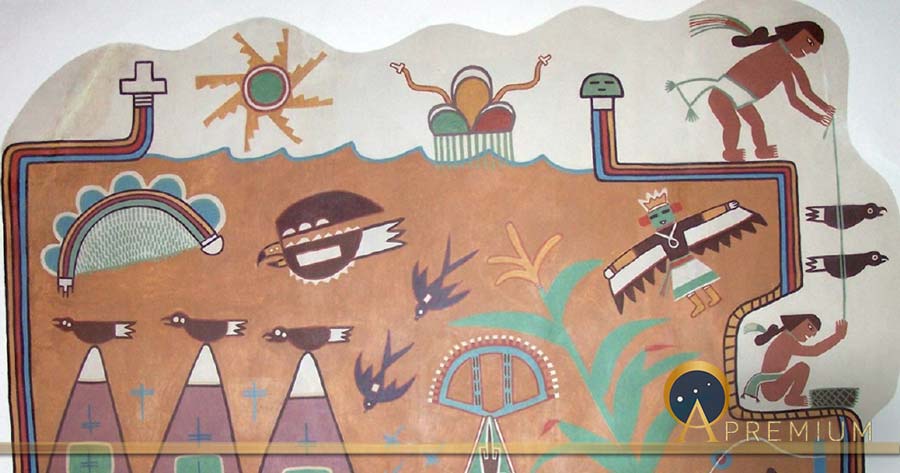Ainu And Hopi Take To The Sky
The ancient Chinese and South Asian cultures reflected an early interest in the idea that one could build a machine to take to the air, even if the technology to be able to do so was not yet available. What is remarkable, moreover, is the universality of such an idea, and in fact, an echo of the South Asian tales of flying vehicles, and deities using such conveyances, even appears in folklore from the far northern reaches of the Asian continent. In the mythological narratives of the Ainu people of Japan and northern Russia, a character identified as the creator of the world, known as samaikur, has to journey through the celestial realm to retrieve the soul of his kidnapped princess. After a series of battles, samaikur is able to bring the soul back and return it to her body. The princess herself often is described in these tales as residing on a high mountain. Most interesting here is the fact that samaikur rides a vehicle to make his trip.

A Japanese samurai and Ainu in Hokkaido around 1775. Ainu Genre Ema (絵馬), Hakodate City Museum, Hokkaido, Japan (Public Domain)
The Ainu’s Sinta Or Flying Cradle
So there are the combined themes — as in the South Asian tales — of romance, rescue, flight, and mechanical devices. Whereas in some of the South Asian tales of flight the vehicle takes the form of an artificial bird, in the Ainu tale the device is called a sinta or shinta, which is usually the term for a baby’s cradle. However, among the Ainu this word is also used to refer to an aerial vehicle — one story even describes a character who "flew around the sky and fought from a sinta (air conveyance) like a goddess", a scene rather reminiscent of the flights of the deities in the South Asian accounts. Other stories recount the riding of a sinta through the air to travel from place to place, as a kind of aerial ‘sledge’.
For the Ainu, the connection between a ‘cradle’ and an aerial vehicle is not that peculiar, and even a traditional lullaby equates the two, with the cradle referred to as a ‘sleeping ship’. One noted translator, Donald L. Philippi, noted that: “ Ainu gods are said to fly through the sky riding aboard vehicles called shinta, which is the common word for ‘cradle’.
Like this Preview and want to read on? You can! JOIN US THERE ( with easy, instant access ) and see what you’re missing!! All Premium articles are available in full, with immediate access.
For the price of a cup of coffee, you get this and all the other great benefits at Ancient Origins Premium. And - each time you support AO Premium, you support independent thought and writing.
Article based on an extract from Lost Knowledge: The Concept of Vanished Technologies and Other Human Histories.
Dr Benjamin B. Olshin is a Professor (ret) of Philosophy, the History and Philosophy of Science and Technology, and Design at the University of the Arts in Philadelphia. His areas of expertise include sociology of science and technology, design, Eastern / Western philosophy, as well as cross-cultural management. His latest book is: Lost Knowledge: The Concept of Vanished Technologies and Other Human Histories.
Top Image: Kabotie Hopi Symbols Mural (Public Domain)


















